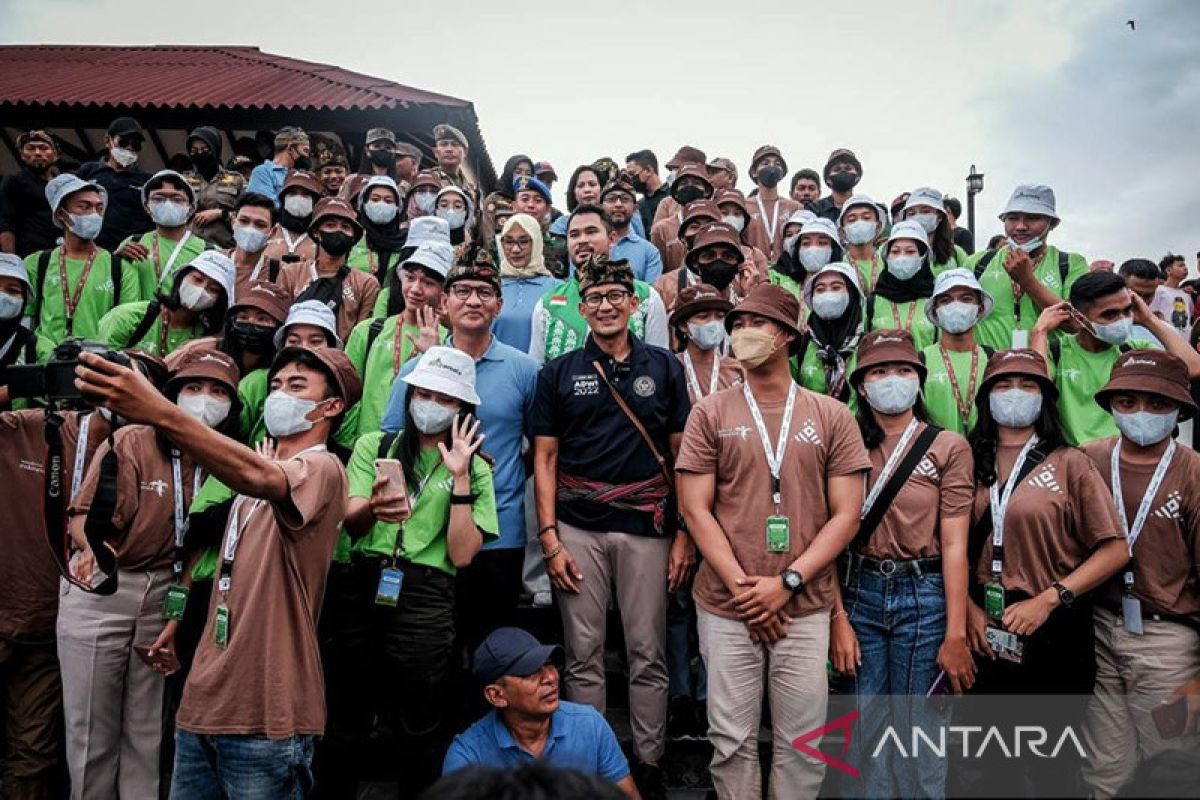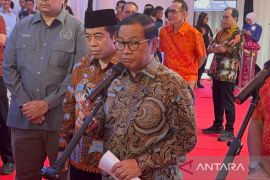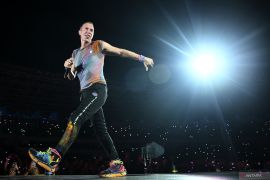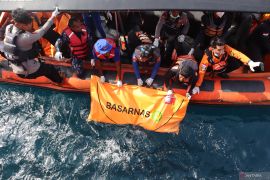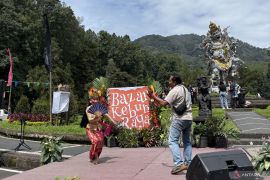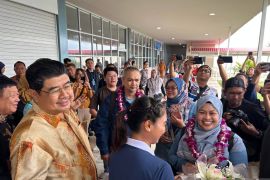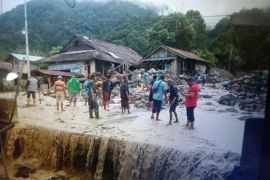The adjustments have been made in line with the shifting tourism trends that require refreshing strategies to align with the needs of tourists.
Thus, by changing its strategy, the Ministry of Tourism and Creative Economy is striving to revive Indonesia’s tourism sector this year.
The steps taken to achieve this have included conducting market recovery and expansion, product and service innovation to improve their quality, building the capacity of human resources, revitalizing tourism destinations and creative economic infrastructure, as well as increasing business resilience and competitiveness.
The Ministry of Tourism and Creative Economy is targeting 1.8–3.6 million foreign tourist visits, 260–280 million domestic tourist visits, with US$470 million–US$1.7 billion in foreign exchange earnings from the tourism sector. It is also aiming to push the sector’s contribution to the gross domestic product (GDP) to 4.3 percent in 2022.
Before the pandemic, tourists were dominated by the 20–60 age group, who traveled with family or in groups and looked for popular and cheap recreational places.
In terms of attractions, the tourist attraction managers prioritized the crowding or urban aspect with amenities that prioritized appearance and quality, affordable vehicles for travel, and chose direct interaction services because digital promotions were still limited.
After the pandemic, most domestic and foreign tourists are young people who travel individually or in small groups in search of clean and safe tourist attractions.
Thus, tourist attraction managers have now changed their strategy by prioritizing recreational areas in nature, focusing on the health aspects, and reducing direct interactions by digitizing promotion, sales, and payment.
Now, as directed by the Minister of Tourism and Creative Economy, Sandiaga Uno, the development of the tourism sector is more focused on environmental welfare, showcasing the pride of local culture, society, and traditional knowledge, as well as creating a balance between mass tourism and quality tourism.
The tourism sector cannot be separated from providing guarantees of high hygiene, health, and environmental sustainability. Thus, it is essential to implement the health protocols.
One of the efforts made to prepare the post-pandemic tourism sector is the provision of 12 thousand CHSE (Cleanliness, Health, Safety, and Environment) certifications to tourism players in Indonesia.
International-scale events
The various preparations made by the Ministry of Tourism and Creative Economy are a part of the government’s efforts to enhance its readiness to host various international-scale events throughout 2022.
The events include G20 side events such as Asian Venture Philanthropy Network (AVPN) Conference, International Wellness Tourism Conference & Festival (IWCTCF), World Conference on Creative Economy (WCCE), Tourism Working Group (TWG), and Tourism Ministerial Meeting (TMM).
The other international-scale events are the World Tourism Day celebration and the Global Platform on Disaster Risk Reduction (GPDRR).
Some of those events have been held successfully in accordance with the government’s goal of introducing quality and sustainable tourism.
It can be said that the revival of Indonesian tourism began with the successful implementation of the Pertamina Grand Prix of Indonesia or the 2022 MotoGP event in Mandalika, West Nusa Tenggara (NTB).
The MotoGP event provided economic value added of Rp4.5 trillion and created jobs for around 35 thousand–50 thousand people.
Based on a survey by the Ministry of Tourism and Creative Economy, of the total MotoGP spectators in Mandalika from March 18–20, 2022, whose number reached over 100 thousand, 72.89 percent were millennials. The spectators spent more than Rp10 million per person while in NTB.
On average, 60.62 percent of the visitors traveled by air and 22.73 percent used private vehicles. This pushed up the number of passengers flying to NTB by 94.81 percent and sea transportation by 74.91 percent.
The event also benefited accommodation providers such as star-rated hotels and homestays around the Mandalika circuit as they were fully booked.
Furthermore, the MotoGP event also contributed to a 1.46-percent increase (year on year) in NTB's gross regional domestic income (GRDP), with growth in the food and beverage sector pegged at 1.04 percent and transportation and warehousing at 0.74 percent.
In the first quarter of 2022, NTB's economic growth stood at 7.76 percent, while economic growth at the national level was recorded at 5.01 percent.
Increase in tourist visits
The Indonesian government has slowly eased several travel restrictions in the country, which has stimulated an increase in the number of tourist visits.
For example, during the 2022 Eid al-Fitr holiday, visits to tourist villages increased, with 48 million out of 80 million homecomers carrying out tourism activities and spending Rp1.5 million per person on average.
The number of foreign tourists arriving in Indonesia by air reached 111,100 in April 2022, an increase of 499 percent compared to April 2021 and up 172 percent compared to March 2022.
In addition, the Ministry of Tourism and Creative Economy promoted the blue and green economy in the tourism sector by encouraging the development of ecotourism, the use of environmentally friendly transportation in the tourism sector, waste management programs in tourist destinations, and carbon footprint offsetting for tourists.
Entering May 2022, in line with the easing of travel restrictions for foreign tourists, Indonesia’s tourism experienced an increase in demand from foreign markets. The policies implemented to boost foreign tourist visits included the provision of visas on arrival to tourists from 72 countries and the lifting of quarantine and COVID-19 testing requirements for vaccinated tourists.
Due to the increase in demand for the number of flights and the opening of new routes, the Ministry of Tourism and Creative Economy had to re-calibrate the appropriate strategy for promoting tourism.
The strategy included encouraging tourism and creative economy actors, travel agents, and travel agencies to participate in the world's largest tourism exhibitions. Further, it involved increasing cooperation through joint promotion schemes with travel agents and agencies in other countries where tourists come from.
The various successes of the Ministry of Tourism and Creative Economy’s policies in developing the tourism sector in 2022 have finally prompted the government to make a bid for the executive board of the World Tourism Organization of the United Nations (UNWTO) for the 2023–2027 period.
It seems that the various goals set by the Ministry of Tourism and Creative Economy in 2022 will be achieved or even surpassed on account of the hard work done to revive Indonesia’s tourism.
It is possible that Indonesia's ranking in the Travel and Tourism Competitiveness Index (TTCI) will improve significantly, considering that in 2021, the country placed 32 out of 117 countries, or up 12 positions, based on data released by the World Economic Forum in May 2022.
Related news: Around 72.89% spectators of MotoGP 2022 are millennials
Related news: Mandalika Circuit attracts international racing organisers: Uno
Editor: Rahmad Nasution
Copyright © ANTARA 2022
